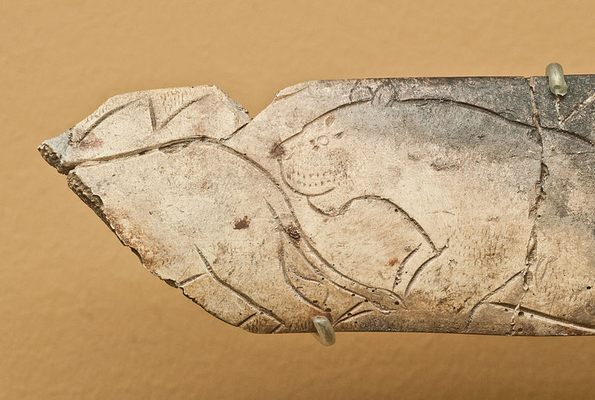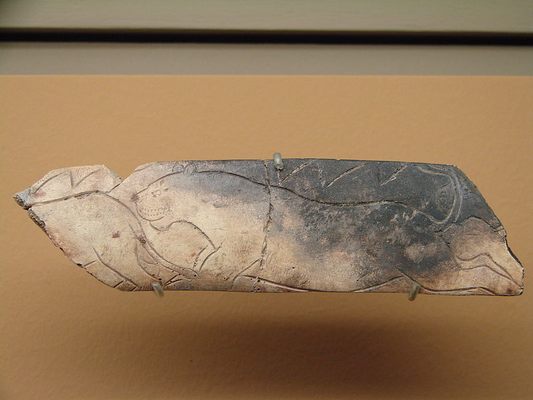About
The lion is an animal that appears as a symbol in Paleolithic art from all across Europe. One of the earliest artistic depictions of the majestic cat is this beautiful frieze of lions engraved on bone. Excavated from the La Vache cave, it is around 11,000 years old, and on display at the National Archaeology Museum of France.
The formidable feline portrayed in this and other artifacts is not the modern, familiar maned lions that inhabit swathes of tropical Africa and a small part of India, the proverbial "king of the jungle." It is instead a species called the cave lion, which inhabited the icy northern hemisphere, in parts of Eurasia and North America such as Canada and Alaska—you might call it the "king of steppe and tundra."
Unlike modern lions, the cave lion was maneless, had solitary behaviors, and grew to an enormous size, standing about 5 feet tall at the shoulders and stretching nearly 7 feet long from head to tail. Its prey would likely have consisted of a wide variety of the herbivores that congregated in vast herds on the tundras of Europe, such as reindeer, musk oxen, bison, and red deer.
It is probable that the cave lion would have also on occasion preyed on other ferocious predators, such as cave bears, cave hyenas, wolves, and the calves of gigantic and dangerous creatures like the woolly rhino and woolly mammoth. Similarly, it is almost certain that the lion, as the apex predator of the region, would have readily preyed upon both Neandertals and early modern humans with whom it competed for both caves and food.
The fear and awe inspired by the terrifying prowess of this big cat are evident from the prehistoric artifacts unearthed over the years. Many depictions of the cave lion beautifully emphasize the grace, stealth, and strength of the animal. In some cases, this art even portrays amphomorphic creatures combining feline and human characteristics, which might even suggest a desire by humans to obtain the attributes of the lion. For human hunter-gathers of the Ice Age, this supreme hunter of the landscape with its god-like powers to take life would have been conceived by the shamans of some tribes in supernatural and religious terms. Perhaps, as the Amur tiger still is by modern indigenous Siberians.
But towards the end of the Paleolithic era, like the Siberian tiger of today, the cave lion's reign as the apex predator of its icy tundra realm was coming to an end. Paleontologists believe that this hunter became the hunted as humans began to kill the cave lion and its prey in an ever greater frequency. This overexploitation combined with the rapidly changing climate led to the extinction of this magnificent beast approximately 10,000 years ago.
Although it's been extinct for thousands of years, the magic and menace that the sight and presence of the great cat inspired in our awestruck ancestors remains forever captured in artifacts such as the Frieze of the Lions.
Related Tags
Know Before You Go
The National Archeological Museum is open from 10 am to 5 p.m. every day except Tuesdays and the entrance is 7 euro. The engraved lion frieze can be found in the Paleolithic room of the museum, along with many other fascinating and beautiful Ice Age artifacts.
Published
May 9, 2019

























